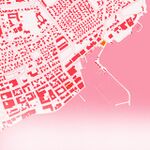Inscríbete y crea tu propia colección de obras y artículos
Diferencia entre revisiones de «Julióbriga»
Ir a la navegaciónIr a la búsqueda
m (Texto reemplazado: «{{Referencias}} » por «{{Referencias}} ») |
m (Texto reemplazado: «\|thumb\|right\|» por «|right|») |
||
| (No se muestran 2 ediciones intermedias del mismo usuario) | |||
| Línea 1: | Línea 1: | ||
[[Archivo:Casa de los Mosaicos (Julióbriga).jpg | [[Archivo:Casa de los Mosaicos (Julióbriga).jpg|right|350px|Vista parcial de la Casa de los Mosaicos, Julióbriga.]] | ||
[[Archivo:Cantabros.png | [[Archivo:Cantabros.png|right|350px|Cantabria durante las Guerras Cántabras]] | ||
<!--'''[[Juliobriga]]''' ({{Lang-es|Julióbriga}}, ({{Lang-la|Iuliobriga}}, {{Lang-grc|''Ἰουλιὃβριγα''}}) was the most important [[urban]] centre in [[Roman Empire|Roman]] | <!--'''[[Juliobriga]]''' ({{Lang-es|Julióbriga}}, ({{Lang-la|Iuliobriga}}, {{Lang-grc|''Ἰουλιὃβριγα''}}) was the most important [[urban]] centre in [[Roman Empire|Roman]] Cantabria, as stated by numerous Latin authors including [[Pliny the Elder]].<ref>"But among the seven peoples belonging to the Cantabri, Juliobriga is the only place worthy of mention" [[Pliny the Elder]], ''[[Natural Histories]]'' III.4.27</ref> The site has traditionally been identified with ruins in the village of [[Retortillo (Cantabria)|Retortillo]] (Cantabria) and its Villafría district, in the municipality of [[Campoo de Enmedio]].<ref>The ruins are 4km (2.5 mi) southeast of [[Reinosa]] near the reservoir of the river Ebro.({{Es}} Iglesias Gil, JM. ''Julióbriga'', p. 5.)</ref> | ||
Its founding, during the [[Cantabrian Wars]] (29 BC-[[19 BC]]), made it a powerful symbol of Roman domination of the tribes of the [[Cantabri]]. The city was named after the reigning emperor Augustus and his adopted family name, the [[gens]] [[Julius|Julia]],<ref name="topónimo">{{Es}} Mangas Manjarrés, J. ''La Hispania Romana''. en Manuel Prado, J. (dir.) ''Historia de España''. Esplugues de Llobregat: Ediciones Orbis, S.A.; 1991. Vol. I ''«Prehistoria a 409»'', p. 192. ISBN 8401615135.</ref> with the [[Celtic]] [[toponym]] element ''-briga'', common in Iberia.<ref>"The same Indo-European root is also the origin of the Germanic cognates berg or burg, Gothic baurgs. The first meaning is, apparently, something like 'hill', from whence comes 'fortress' or 'fortified town', until we may eventually get simply to the idea of an urban enclave that was not necessarily fortified." ([http://www.uwm.edu/Dept/celtic/ekeltoi/volumes/vol6/6_15/garcia_alonso_6_15.html Juan Luis García Alonso, "-Briga Toponyms in the Iberian Peninsula" ''e-Keltoi'' '''6''')].</ref> Due to its strategic location in the [[Besaya valley]], it was able to control trade between the [[Douro]] river and the [[Bay of Biscay]]. Juliobriga grew slowly, reaching its peak between the end of the 1st century and the early 2nd century [[AD]]. Following that, its population began to decline, until the city was completely abandoned in the 3rd century. | Its founding, during the [[Cantabrian Wars]] (29 BC-[[19 BC]]), made it a powerful symbol of Roman domination of the tribes of the [[Cantabri]]. The city was named after the reigning emperor Augustus and his adopted family name, the [[gens]] [[Julius|Julia]],<ref name="topónimo">{{Es}} Mangas Manjarrés, J. ''La Hispania Romana''. en Manuel Prado, J. (dir.) ''Historia de España''. Esplugues de Llobregat: Ediciones Orbis, S.A.; 1991. Vol. I ''«Prehistoria a 409»'', p. 192. ISBN 8401615135.</ref> with the [[Celtic]] [[toponym]] element ''-briga'', common in Iberia.<ref>"The same Indo-European root is also the origin of the Germanic cognates berg or burg, Gothic baurgs. The first meaning is, apparently, something like 'hill', from whence comes 'fortress' or 'fortified town', until we may eventually get simply to the idea of an urban enclave that was not necessarily fortified." ([http://www.uwm.edu/Dept/celtic/ekeltoi/volumes/vol6/6_15/garcia_alonso_6_15.html Juan Luis García Alonso, "-Briga Toponyms in the Iberian Peninsula" ''e-Keltoi'' '''6''')].</ref> Due to its strategic location in the [[Besaya valley]], it was able to control trade between the [[Douro]] river and the [[Bay of Biscay]]. Juliobriga grew slowly, reaching its peak between the end of the 1st century and the early 2nd century [[AD]]. Following that, its population began to decline, until the city was completely abandoned in the 3rd century. | ||
| Línea 9: | Línea 9: | ||
==References== | ==References== | ||
--> | --> | ||
'''Julióbriga''' (en latín ''Iuliobriga'') fue una ciudad romana situada en | '''Julióbriga''' (en latín ''Iuliobriga'') fue una ciudad romana situada en Cantabria, en las proximidades el actual Campoo de Enmedio, fundada al final de las guerras cántabras entre los años 15 a 13 a. C. | ||
El año 60 es mencionada por Plinio, que la sitúa en las proximidades del nacimiento del río Ebro.<ref>[http://www.celtiberia.net/verlugar.asp?id=512 Iuliobriga en Celtiberia.net]</ref> | El año 60 es mencionada por Plinio, que la sitúa en las proximidades del nacimiento del río Ebro.<ref>[http://www.celtiberia.net/verlugar.asp?id=512 Iuliobriga en Celtiberia.net]</ref> | ||
| Línea 22: | Línea 22: | ||
*[http://platea.pntic.mec.es/~rruisanc/Identities2/SpanishEducation/Altoebro/juliobriga/JULIOBRIGA.htm Juliobríga] | *[http://platea.pntic.mec.es/~rruisanc/Identities2/SpanishEducation/Altoebro/juliobriga/JULIOBRIGA.htm Juliobríga] | ||
*[http://www.culturaclasica.com/index.php?q=node/254 Julióbriga, 25 años de investigación científica] | *[http://www.culturaclasica.com/index.php?q=node/254 Julióbriga, 25 años de investigación científica] | ||
{{Referencias}} | {{Referencias}} | ||
{{Breve|historia}} | {{Breve|historia}} | ||
Revisión actual - 11:19 31 mar 2024
Julióbriga (en latín Iuliobriga) fue una ciudad romana situada en Cantabria, en las proximidades el actual Campoo de Enmedio, fundada al final de las guerras cántabras entre los años 15 a 13 a. C.
El año 60 es mencionada por Plinio, que la sitúa en las proximidades del nacimiento del río Ebro.[1]
Situada en el interior, tenía acceso al mar por el llamado Puerto de la Victoria (Portus Victoriae Iuliobrigensium) que fue fundado el año 19 a. C. al final de las Guerras Cántabras. Algunos autores defienden que estaba en la actual Bahía de Santander, mientras que otros creen que se encontraba en Santoña.
Enlaces externos[editar]
- El paisaje de Campoo y Julióbriga en época romana
- Los formidables guerreros cántabros
- Juliobriga en su marco histórico por José Manuel Iglesias Gil
- Ruinas de la ciudad romana de Julióbriga
- Juliobríga
- Julióbriga, 25 años de investigación científica
Referencias
| Referencias e información de imágenes pulsando en ellas. |



